The mystery of the double catch light is solved. I think.
Last week I posted a series of takeoff shots of a female Swainson’s Hawk that were taken on my recent camping trip to Montana and Idaho. I got quite a few shots of her in flight but in many of them she was too close to the left frame edge for a pleasing composition. Or she was a little too soft. Or both.
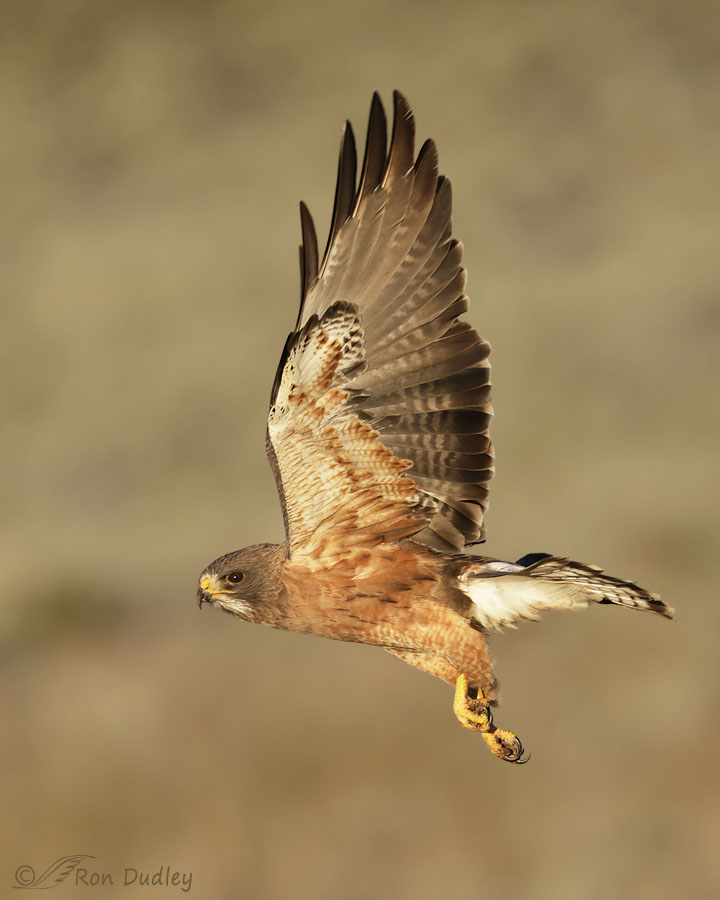
1/2700, f/6.3, ISO 800, Canon R5, Canon EF500mm f/4L IS II USM + 1.4 tc, not baited, set up or called in
But two of them turned out OK. I had great eye contact in both photos and I love the warm light immediately after sunrise.
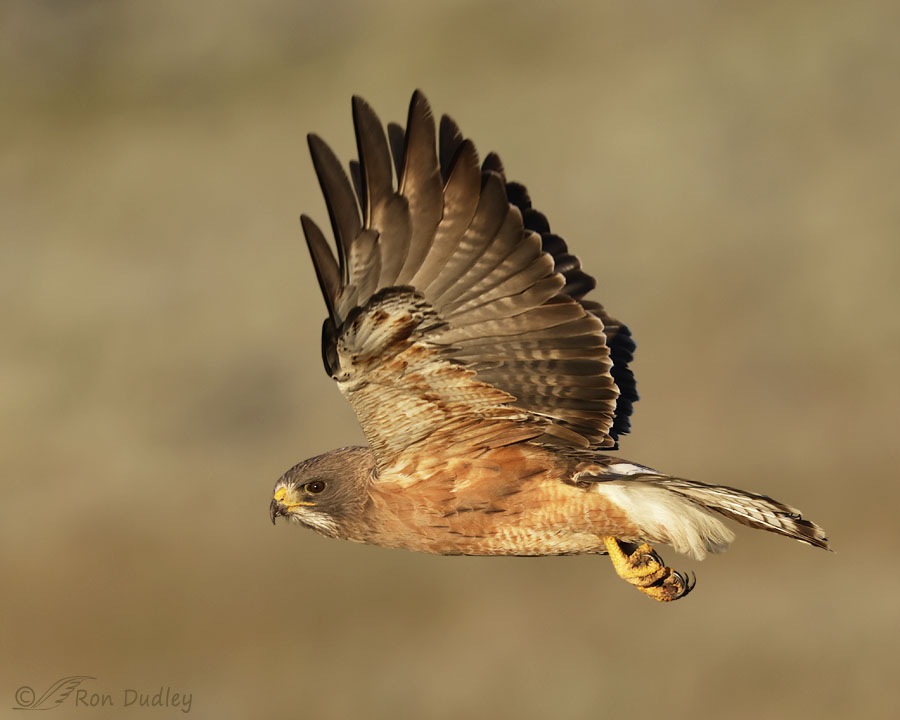
1/2700, f/6.3, ISO 800, Canon R5, Canon EF500mm f/4L IS II USM + 1.4 tc, not baited, set up or called in
In this one the hawk is pretty tight in the frame but I didn’t have much choice because I had no more room on the left.
But neither of these shots is true to the original photo. I had to dink around with both of them during processing because…
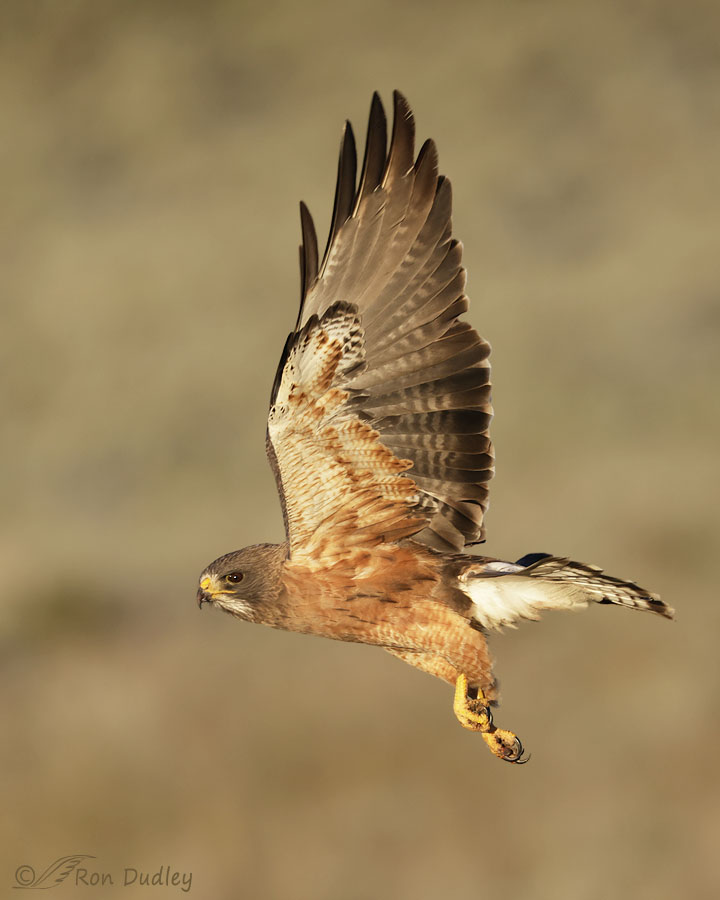
of a double catch light in the bird’s eye.
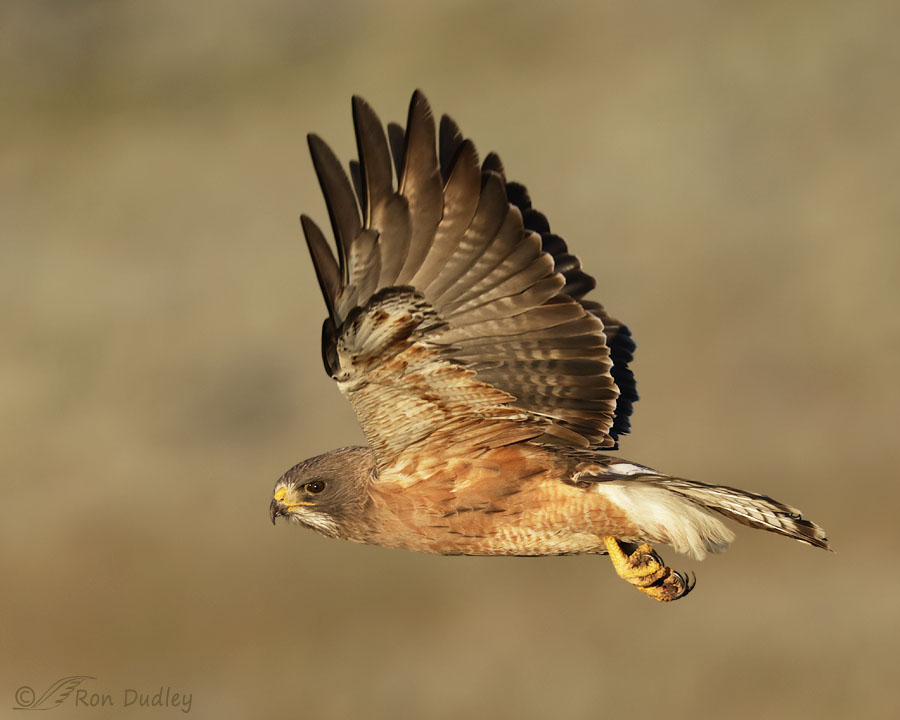
Both photos had the double catch light and so did several others.
Even though double catch lights may (or may not) be natural, I often find them to be highly distracting so I typically remove the smaller one and I have no problem with doing it. But if I can’t figure out the source of the second catch light it drives me a little nuts.
Double catch lights usually occur when the bird is in or on water. The primary catch light is a direct reflection of the sun and the secondary one is a reflection of the sun off the surface of the water between the bird and the photographer. But in this case there was no water (or anything else reflective) between me and the hawk.
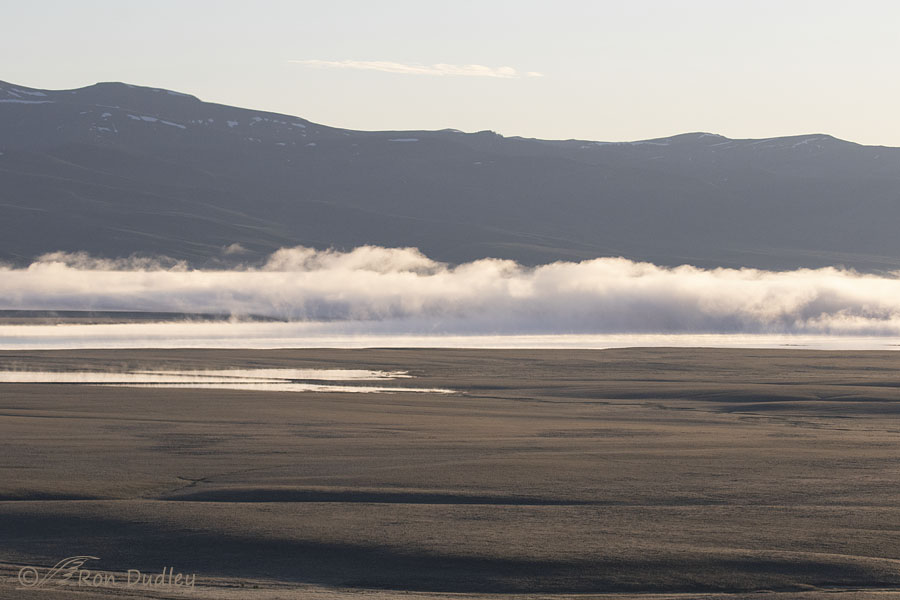
But last night I remembered what was directly behind me when I was photographing the hawk.
You’ve seen this photo of fog-enshrouded Lima Reservoir before. It was taken right at sunrise and about 12 minutes before I photographed the hawk. The lake and fog were so big and so bright, much brighter than the actual sun coming up over the horizon out of frame to the right, they must have been the source of the primary catch light in my hawk photos. And the source of the secondary catch light was the sun itself.
At least that’s my theory and I’m sticking to it until convinced otherwise. And yes, I feel better.
Ron
Note: For perspective, I estimate that the reservoir in the photo above was 4- 5 miles away from me.


The smaller catch light in the upper left appears to have a yellowish tint. Is it possible that it is a reflection off of part of the beak?
I highly doubt that’s what it is, Larry. That catch light is a warmer color because the sun was just barely over the horizon.
Sensaational series, thanks for sharing!!
Charlotte Norton
Thanks, Charlotte.
It is an absolutely beautiful photo, Ron. And now that I see both photos together, I think it is slightly improved with the second catch light removed. Although I would be plenty proud to have captured either version!
I’m glad you like it both ways, Bill. Thanks.
She, and the warm light she is in, are both SPECTACULAR. i am glad that you were able to scratch that particular itch.
Me too, EC. I can let it rest now. Assuming I’m actually correct, of course…
Very interesting about the source of the catch lights, and neat that the primary would be from the light of the fog, with the sun the pinpoint! It’s kind of like trying to figure out how the clouds in a cloud bank are being lit, when it looks like there are 15 different light sources.
And Everett’s comment about the Audubon photo awards and how they have to vet the entries – they recently posted another 100 “also rans” that are amazing. Each has a story attached, how the photo was captured (many of the photographers seem to be rolling in mud or icy water), but in the back of my mind was “Is this real?”🤔 Your explanations of how you get your images certainly helps when looking at others’ work.
“our explanations of how you get your images certainly helps when looking at others’ work.”
Very good to know, Carolyn. That’s one of the main reasons I often try to explain stuff like that. Thanks very much.
She’s a stunner independent of the number of catchlights. I do appreciate your transparency about any “editing” you do — I wish more photographers were as forthcoming. Personally, I don’t find a second or even a third catchlight all that distracting, but that’s probably just me. I think your explanation of the sources is fascinating as well! 😃
“I don’t find a second or even a third catchlight all that distracting”
I wish they didn’t bother me but they do and there’s nothing I can do about it. Except get rid of one of them. Thanks, Marty.
You already know I’m kind of a weirdo. 🤪😂😊
Weird is just wired (differently). Says another weirdo. And I am with you on finding her beautiful regardless of the number of catchlights.
💜💜💜
Your theory is better than anything I could come up with and your photos are far better than any photos I have ever taken or will ever. Outstanding Ron. As I mentioned previously I have only once seen a Swainson’s here.
Audubon magazine this month talks about their photo awards and how they now have to seriously vet each photo and photographer to be sure that the photos are real and taken by the photographer with the equipment they list. Very interesting article about the ethics and now the problems caused by the ability to fake photos and then in the future even more difficult with the increasing use of AI.
When I first discovered your site the thing that most attracted me was your statement on your photography ethics.
Everett, what you said in your comment about ethics means a lot to me. Thanks very much.
Beautiful hawk! Luv the rich colors……. 🙂 Logical to me on source of double catch light. Something one could put to use at some point perhaps?
Judy, for me it was already useful. It gave me an explanation. And some peace of mind… 🙂
Never gave the catch light thing much thought before. But this got me Googling.
If I understand correctly, situations of multiple catch light are an indicator of multiple sources of light. What you propose seems to be the only logical explanation.
Michael, there are several other possible explanations for the second catch light (a reflection of the sun off of my chrome pickup bumper for example) but in this case that’s highly unlikely.